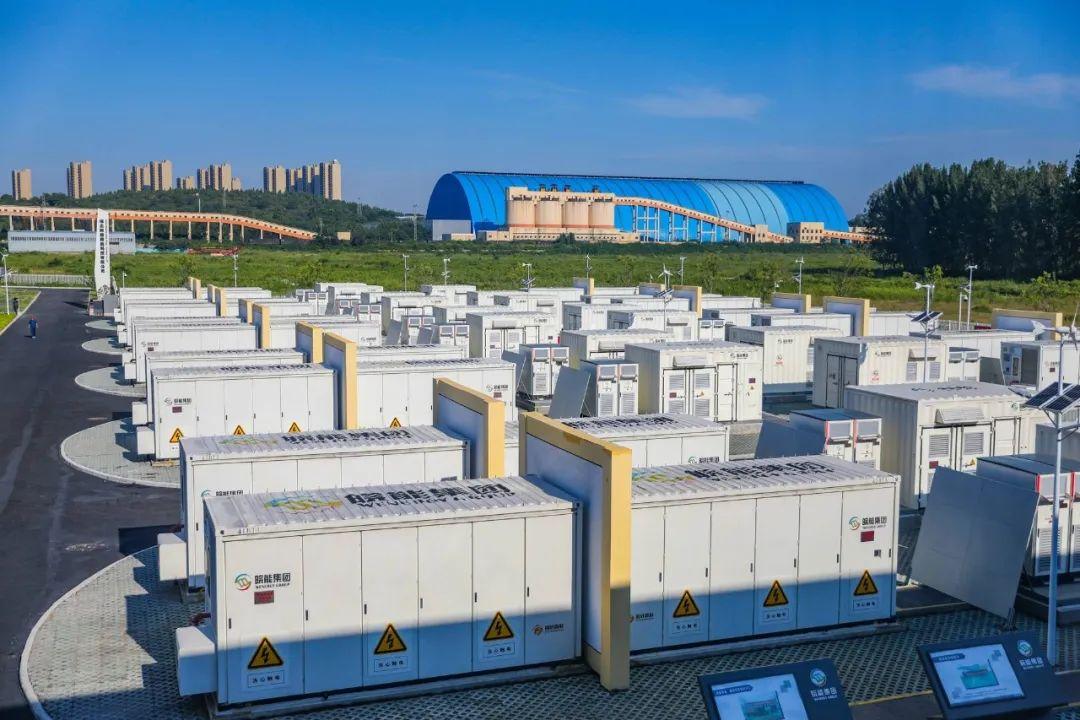
يناير . 03, 2024 15:49 الرجوع للقائمة
نظام تخزين الطاقة التجارية والصناعية لتعظيم الاستهلاك الذاتي وخفض التكاليف
Commercial and Industrial (C&I) energy storage systems play a crucial role in maximizing the self-consumption rate of solar energy, reducing electricity expenses for industrial and commercial owners, and aiding in energy conservation and emission reduction efforts. These systems are categorized as user-side energy storage solutions, enabling enterprises to optimize their energy usage and become more sustainable.
هناك نوعان من نماذج الأعمال الأساسية لتشغيل أنظمة تخزين الطاقة C&I. في النموذج الأول، يقوم المستخدمون التجاريون والصناعيون بتثبيت معدات تخزين الطاقة بأنفسهم، مما يؤدي إلى توفير مباشر في تكاليف الكهرباء. ومع ذلك، يتعين على هؤلاء المستخدمين تحمل تكلفة الاستثمار الأولية ونفقات الصيانة السنوية. النموذج الثاني يتضمن قيام شركات خدمات الطاقة بمساعدة المستخدمين في عملية التثبيت. تستثمر هذه الشركات في بناء أصول تخزين الطاقة وتكون مسؤولة عن تشغيل وصيانة الأنظمة. ثم يقوم المستخدمون الصناعيون والتجاريون بدفع تكاليف الكهرباء لشركات خدمات الطاقة.
توسعت تطبيقات أنظمة تخزين الطاقة من جانب المستخدم بشكل كبير، لتشمل سيناريوهات مختلفة مثل محطات الشحن والمبادلة، ومراكز البيانات، ومحطات 5G الأساسية، والطاقة الساحلية للموانئ، ومبادلة الشاحنات الثقيلة. أصبحت هذه الأنظمة ضرورية للسماح لهذه المرافق بالعمل بكفاءة مع تقليل تأثيرها البيئي.

The structure of C&I energy storage systems typically involves separate Power Conditioning System (PCS) units and battery systems. The inverter boost unit consists of the PCS, grid-connected cabinets, and transformers. Containers housing the battery cabinets, confluence cabinets, and monitoring equipment provide independent power supply, lighting, temperature control, humidity control, fire protection, safety escape, and other automatic control and safety assurance units. Additionally, the power station requires a power system to provide self-consumption power for the energy storage unit and a booster station to facilitate grid connection.
تشكل الألواح الشمسية عنصرًا حاسمًا في أنظمة تخزين الطاقة C&I. يجب أن يلبي تصميمها الطلب اليومي على استهلاك الكهرباء للحمل في ظل الظروف الجوية المتوسطة. وهذا يعني أن الطاقة المولدة من الألواح الشمسية يجب أن تتوافق مع استهلاك الكهرباء السنوي للحمل. ومع ذلك، فمن الضروري مراعاة أنه لا يتم تحويل كل الطاقة المولدة إلى استهلاك للكهرباء. يجب مراعاة عوامل مثل كفاءة وحدة التحكم، وفقدان الماكينة، وفقدان حزمة البطارية أثناء الشحن والتفريغ.
نظرًا لمتطلبات وقت الاستجابة المنخفضة نسبيًا لأنظمة تخزين الطاقة C&I، تُستخدم البطاريات من نوع الطاقة بشكل شائع نظرًا لفعاليتها من حيث التكلفة وعمر الدورة ووقت الاستجابة. وتتمثل المهمة الأساسية للبطارية في ضمان استهلاك الطاقة دون انقطاع عندما يكون الإشعاع الشمسي غير كاف. يمكن تصميم سعة حزمة البطارية وفقًا للاحتياجات والظروف المحددة لكل نظام، مع الأخذ في الاعتبار عوامل مثل متطلبات الجهد الكهربي، وتحولات وقت الطاقة، ومراجحة الوادي الذروة، والطاقة الاحتياطية للأيام الممطرة.
C&I energy storage inverters have a relatively simple function, primarily based on two-way conversion. They are smaller in size and easier to integrate with battery systems. The flexibility of these inverters allows for expansion based on future needs. With an ultra-wide voltage range of 150-750V, they can cater to various battery types such as lead-acid batteries, lithium batteries, and Lithium Iron Phosphate (LEP) batteries. In addition to basic converter functions, coupling functionality is crucial, including primary frequency regulation, fast dispatch of source, grid and load, and strong adaptability to achieve quick power response.
عند اختيار أجهزة الكمبيوتر، يجب مراعاة متطلبات التحميل. يتم تصنيف الأحمال عادةً على أنها حثية أو مقاومة. تتمتع الأحمال الحثية، مثل المحركات الموجودة في مكيفات الهواء المركزية والضواغط والرافعات، بقدرة تشغيل تبلغ ثلاثة إلى خمسة أضعاف الطاقة المقدرة. ولذلك، فمن الضروري النظر في قوة البداية لهذه الأحمال أثناء التشغيل خارج الشبكة في مرحلة التصميم للتأكد من أن طاقة خرج العاكس تتجاوز متطلبات طاقة الحمل. بالنسبة للتطبيقات ذات المتطلبات الصارمة، مثل محطات المراقبة والاتصالات، يجب أن يكون إجمالي طاقة الخرج هو مجموع كل قوى الحمل.
The energy management system (EMS) for most C&I energy storage systems does not require grid dispatching, resulting in relatively basic functionality. The primary focus of the EMS is local energy management, supporting battery balance management, ensuring operational safety, enabling millisecond-level fast response, and facilitating integrated management and centralized control of energy storage subsystem equipment.
وبالنظر إلى المستقبل، من المتوقع أن تشهد الفترة من 2023 إلى 2024 ذروة جديدة في تطوير تخزين الطاقة الصناعية والتجارية. إن الطلب على مثل هذه الأنظمة، محليًا ودوليًا، كبير. في حين أن نمط المنافسة لم يظهر بشكل كامل، فإن السوق على وشك الاختراق. إن تخزين الطاقة الصناعية والتجارية لديه القدرة على أن يصبح تكوينًا قياسيًا في الإنتاج الصناعي والمناطق التجارية الكبيرة، مع وجود مجال واسع للنمو.
ACDC, a company focused on research and development, has been closely following the market demand for energy storage batteries. In response to this demand, ACDC is set to release a series of industrial and commercial energy storage batteries. These new solutions will provide modular and flexible expandability at various power and capacity levels, offering an all-in-one design with AC coupling compatibility. ACDC's batteries will be perfectly matched to specific energy requirements, maximizing battery cell life. With outdoor housings suitable for any installation site, ACDC's broad portfolio of energy storage solutions enables efficient and cost-effective distribution and utilization of energy according to operational needs. Their expert systems and applications teams utilize specialized techno-economic tools to optimize the lifetime economics of projects, providing an investment-grade business case that supports project planning and financing. ACDC is committed to supporting its clients throughout every step of their energy storage journey.
منتجات ذات صله:
Mobile-PW-512 نظام تخزين الطاقة المنزلي المحمول
سيتم إزالتها في حالة المخالفة
الموقع المرجعي: https://www.pv-magazine.com
-
Wireless DC Charging: The Next Frontier in Contactless EV Power Delivery
أخبارAug.04,2025
-
Hybrid BMS Energy Controls: Integrating Renewable Energy Sources
أخبارAug.04,2025
-
Blockchain for Secure and Decentralized EMS Power Systems
أخبارAug.04,2025
-
AI-Driven for Smart Grids: Energy Management System (EMS)
أخبارAug.04,2025
-
Advanced Distribution Management System (ADMS) Energy
أخبارAug.04,2025
-
5G-Enhanced BMS Energy Savings: Ultra-Low Latency Control
أخبارAug.04,2025























